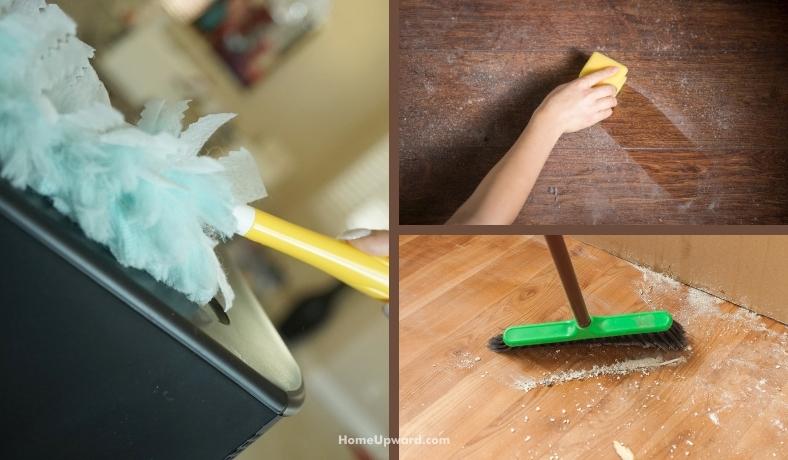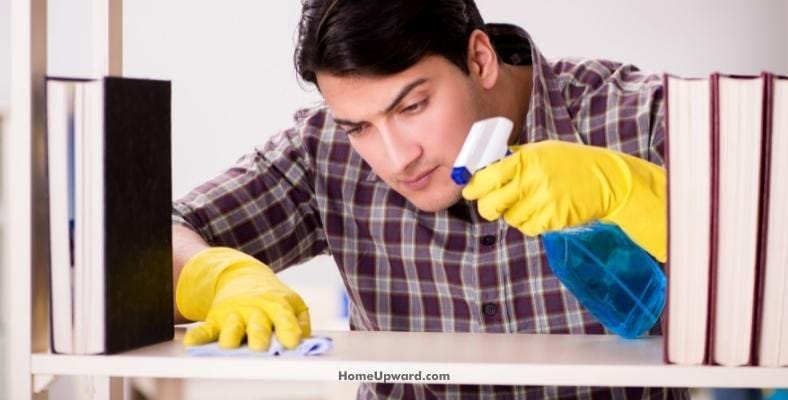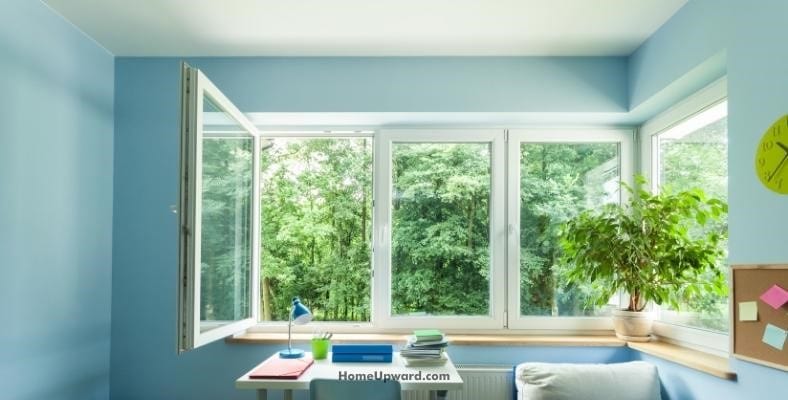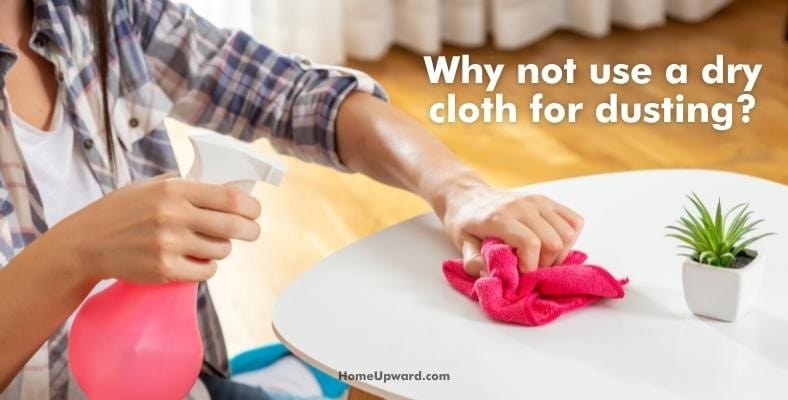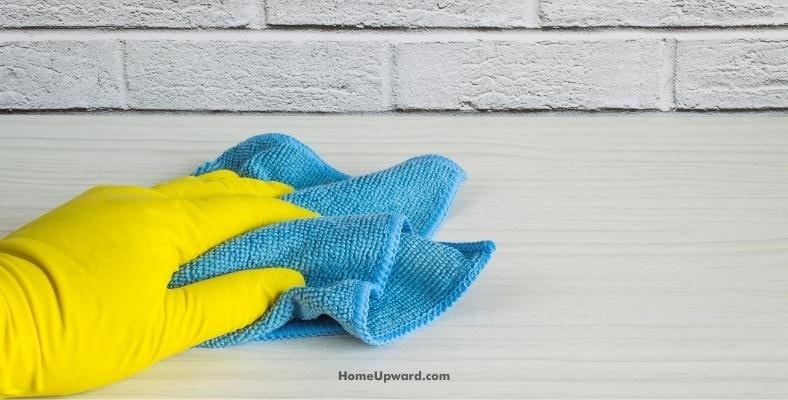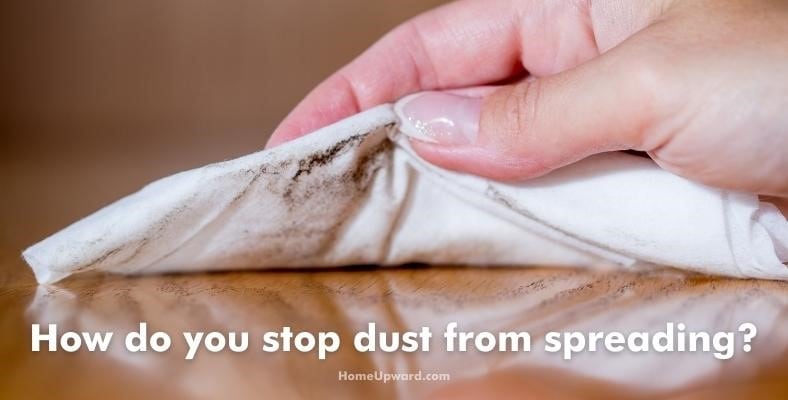Contents
How to Clean Dust Without Spreading It
7 Great Ways to Dust Without Spreading It
Don’t make the common mistake of spreading your dust around while trying to clean it. Follow these 7 tips for effective dusting.
1. Go from top to bottom
When you start dusting at the bottom and work your way up you may have to dust twice due to the dust at the top spreading downward. Instead, start from the top and work your way down.
Dust ceiling fans and the ceiling first. Work your way down the room, starting with the walls. Next, do the windows and blinds, furniture, and the floor.
2. Go side to side
When you dust from side to side instead of in a circle you only go over each area one time. When you use a circular motion, you may go over the same place multiple times, increasing the chance of just moving the dust around on the item.
Going over the area only once ensures you remove the dust instead of spreading it around.
3. Use the right cloth properly
When dusting you should use a clean cloth. Using a dirty cloth adds more dust back into the room.
A microfiber cloth is great for all-purpose cleaning. It will pick up the dust particles and hold them in, decreasing the risk of spreading the mess around.
4. Keep clutter to a minimum
The less clutter you have the less surface area you need to clean. It’ll be easier to clean a flat surface than it would be to clean several different things on top of something.
5. Use HEPA filters and a good vacuum cleaner
A HEPA filter is a type of automatic air filter. HEPA stands for high-efficiency particulate absorbing filter. This air filter is highly effective at removing particles from the air.
Many vacuums come with HEPA filters which will help prevent airborne dust while vacuuming as they’re very effective at removing dust particles in the air and prevent them from spreading all over again.
6. Use an air purifier to keep dust under control
Using an air purifier can greatly reduce dust in your home. Air purifiers circulate the air of a room and remove the dust. It traps dust when it pulls in the air. Not only does it help remove dust, but it also helps reduce airborne allergen particles the same way it reduces dust. Doing so will improve the indoor air quality considerably.
7. Shake rugs and mats outside
When you shake out a rug or mat inside, you redistribute the dust that gathered on them back into the air. Instead, take them outside to ensure you remove the dust from both the mat and your house.
How Do You Clean Dust in Hard-to-Reach Places?
Dust can be a pain to get to in hard-to-reach places. The good news is that there are many tools and DIY methods you can try to help get into all the nooks and crannies.
- First, you can buy a duster that extends or comes with a long handle. These are really helpful for letting you get to places like ceiling fan blades.
- Using a damp cloth can also help you pick up dust from tight spaces.
- If you don’t have a duster that extends, you can get up on a step-stool or a step-ladder to reach the cobwebs that build in the corners of your ceiling for example.
- One essential cleaning supply for hard-to-reach places is a microfiber cloth. Microfiber cloths especially come in handy when cleaning your blinds. You can hold the cloth around either side of the blind and slide it along to get the dust off.
Does Opening Windows Reduce Dust?
No, opening windows doesn’t reduce dust. While opening windows will help air your house out, it may result in more dust. Outside there are just as many dust particles as there are inside – they’re just more noticeable inside.
While dust bunnies won’t be getting in from your window, dust particles from dirt, pollen, and vehicle exhaust will still get in. These tiny particles aren’t visible as they enter your home but you’ll eventually see them pile up on top of your cabinets and countertops.
Of course, just because opening windows can increase dust doesn’t mean you shouldn’t. Just be prepared to do some extra cleaning.
Why Not Use a Dry Cloth for Dusting?
A damp cloth is better for dusting than a dry one because of the way water picks up the dust.
While a dry cloth does clean up some dust, a large amount of dust gets dispersed to other areas. However, in the same way that hair sticks to wet skin, dust will stick to a damp cloth.
For best results, use a damp microfiber cloth because it already holds in dust better than a regular rag. Moistening the microfiber will allow it to pick up and trap in the dust.
Can You Dust Without a Duster? Should you?
Yes – it’s fine to dust without a duster and in fact can actually be better for cleaning dust. A microfiber cloth will likely work better than a standard duster.
While microfiber cloths grip the particles, dusters may move the dust around without picking it up.
Dusters like feather dusters can be ineffective if they aren’t keeping the dust in but microfiber cloths do just that. The only pitfall to microfiber cloths is that they don’t come with handles to reach higher places as dusters do.
How Do You Stop Dust from Spreading?
The easiest way to reduce dust is to:
- Reduce or remove the sources of dust.
- Keep airflow to a minimum (avoid blowing dust around when possible).
- Reduce the number of places dust mites thrive. Dust mites are microscopic arachnids that live in our homes. They contribute to dust and are the reason for dust allergies.
- Shake out rugs, mats, and carpets outside.
Cleaning tips to help prevent dust and keep it from spreading
Dust mites like to gather in places like our beds and carpets because those trap their main food source: dead skin cells. Surfaces your pets sleep on, like a dog or cat bed, can be homes for dust mites because they feed on pet dander. Upholstered furniture is also a popular place for them to live.
This isn’t to say you need to get rid of your mattresses, dog beds, and couches. Instead, clean them regularly.
Wash your bedding every two weeks, take the covers off dog beds, put them in the washer, and clean your furniture with an upholstery cleaner.
Vacuum your carpet regularly and occasionally use a carpet cleaner to remove the deeper grime. Do the same for any rugs.
Make sure to shake them out outside to ensure the dust doesn’t recirculate in your home.
How to keep cleaning to a minimum
If you don’t want to clean your carpet constantly you can replace it with flooring instead. Less carpet will give the dust mites a considerably smaller area to live.
You can also choose a rug that traps less dust. A shag rug will have much more surface area to collect dust and can be harder to clean.
Regularly brush your pets to keep their fur from collecting with the rest of the dust. Pet hair makes up part of dust. Vacuum your floors regularly, making sure to get into the corners and by the baseboards. The HEPA
Additionally, dust mites thrive in warm, humid environments. Keeping your house cooler and less humid can help control them.

